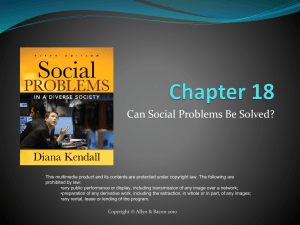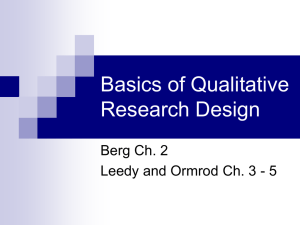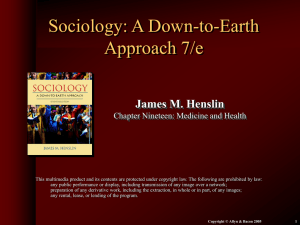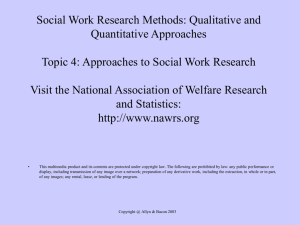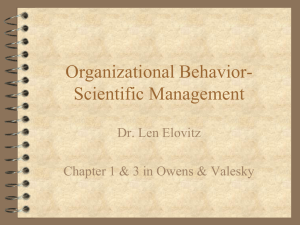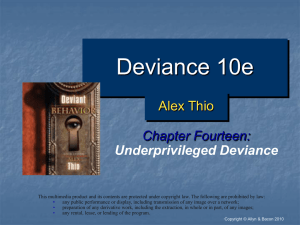Ch 1
advertisement
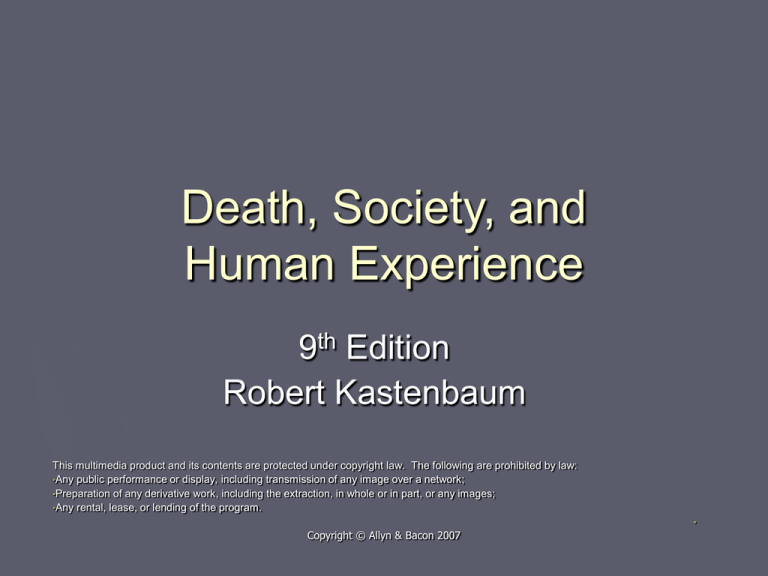
Death, Society, and Human Experience 9th Edition Robert Kastenbaum This multimedia product and its contents are protected under copyright law. The following are prohibited by law: •Any public performance or display, including transmission of any image over a network; •Preparation of any derivative work, including the extraction, in whole or in part, or any images; •Any rental, lease, or lending of the program. • Copyright © Allyn & Bacon 2007 Chapter One: As We Think About Death This multimedia product and its contents are protected under copyright law. The following are prohibited by law: •Any public performance or display, including transmission of any image over a network; •Preparation of any derivative work, including the extraction, in whole or in part, or any images; •Any rental, lease, or lending of the program. • Copyright © Allyn & Bacon 2007 Not Thinking About Death: A Failed Experiment • Avoiding the topic of death • Educational systems • Professional schools (including medical, graduate, and seminary training) • Media outlets (including news and movies) • Fatalism (no need for discussion because the outcomes are determined in advance) Copyright © Allyn & Bacon 2007 Listening and Communicating • Timothy E. Quill, M.D. • Known for his article, “Doctor, I want to die. Will you help me?” • Advocates for physicians as personal guides and counselors to their dying patients • Today physicians and families feel more empowered Copyright © Allyn & Bacon 2007 Your Self-Inventory of Attitudes, Beliefs, and Feelings • Four Self-Inventory Questionnaires provided in the textbook • • • • #1, #2, #3, #4, My My My My Knowledge Base Attitudes and Beliefs Experience with Death Feelings Copyright © Allyn & Bacon 2007 Attitudes, Experiences, Beliefs, & Feelings • • • • Attitudes: our action tendencies Beliefs: our worldview Feelings: our total sense of being All are influenced by personal experiences with dying and death • Experiencing a death that “got to us” changes us Copyright © Allyn & Bacon 2007 How Does State of Mind Affect Death-Related Behavior? • • • Hesitancy to initiate a Living Will Hesitancy to sign an Organ Donor Card Choosing to engaged in high-risk behaviors • Example: Stepping off the curb • Found that those who took greater risks in crossing the street also reported high risk driving, and were more likely to have contemplated suicide and express greater frustration with life. Copyright © Allyn & Bacon 2007 Man is Mortal: But What Does That Have To Do With Me? The Death of Ivan Ilych, by Tolstoy • • • • • Peter Ivanovich realizes he is vulnerable Peter focuses on his own death Peter evades death by leaving (escaping) Peter differentiates himself from Ivan Peter discusses Ivan’s death as factual, creating a barrier between himself and death Copyright © Allyn & Bacon 2007 Anxiety, Denial, and Acceptance: Three Core Concepts • • • Death Anxiety: Emotional distress, insecurity, tension, and apprehensiveness Denial: A response that rejects certain key features of reality in an attempt to avoid or reduce anxiety Acceptance: Coming to terms with death and easing anxiety (different from resignation or depression) Copyright © Allyn & Bacon 2007 Difficulties in Interpreting Death Anxiety Scales • • • • Can we interpret death anxiety out of context of religious, cultural, and personal beliefs? Do low scores mean low death anxiety or denial? What is a normal score for death anxiety? What level of death anxiety is most adaptive and productive? Copyright © Allyn & Bacon 2007 Difficulties in Interpreting Death Anxiety Scales • • • Do the participants’ responses reflect the general population? Can a one-time sample of an individual’s thoughts give an adequate indication of death anxiety? Can researchers assume that individuals would behave in a way that is consistent with their attitudes towards death anxiety? Copyright © Allyn & Bacon 2007 Major Findings from Self-Reports: Levels of Death Anxiety • • • • • • Low to moderate levels of in the general population Women report higher levels Adolescents and Young Adults report high levels Elders report low levels People diagnosed with psychiatric disorders report higher levels No clear pattern established with religious beliefs Copyright © Allyn & Bacon 2007 Situational Death Anxiety • • Trait anxiety: General apprehension and restlessness Situations that often increase death anxiety: • Transitional situations, such as divorce • Exposure to death, such as a neighbor or parent • Life-threatening Illness Copyright © Allyn & Bacon 2007 Theories of Death Anxiety: Early Psychoanalytic Theory • • • Our unconscious system does not respond to the passage of time, nor have the concept of negation, so there is no death to erase life Thanatophobia is a disguise for the real fear: Castration Anxiety Death Anxiety comes from a fear of losing value, love and security by being less than a whole person Copyright © Allyn & Bacon 2007 Theories of Death Anxiety: Existentialism • Awareness of our mortality is the source of anxiety • Society’s primary function is to help us pretend that life will never end • Protect us from ontological confrontation • Provide a belief system to produce a sense of coherence, predictability, and meaning • Provide rituals connecting us with something bigger than ourselves Copyright © Allyn & Bacon 2007 Theories of Death Anxiety: Terror Management Theory • • • Part of Existentialist Theory Emphasizes strong self-esteem as protection from death anxiety Emphasizes our investment in socio-cultural constructions of life and death (including religious belief systems) Copyright © Allyn & Bacon 2007 Theories of Death Anxiety: Edge Theory • • Our survival and adaptation functions take control when we feel we are on the edge of what is safe and known Rather than remain anxious all the time, we use our built-in biomechanisms and cognitive/social skills to respond in dangerous situations Copyright © Allyn & Bacon 2007 Types and Contexts of Acceptance and Denial • • Selective attention: Redirecting attention to whatever seems most salient in the immediate situation Selective response: The individual feels this is not the time or place to discuss death, or the person may be working very hard at completing tasks in full awareness that time is running out Copyright © Allyn & Bacon 2007 Types and Contexts of Acceptance and Denial • • Compartmentalizing: Much of the dying and death reality is acknowledged, but the person stops just short of realizing the situation by putting all the information together Deception: Deliberately giving false information to others is deception (for whatever reason) Copyright © Allyn & Bacon 2007 Types and Contexts of Acceptance and Denial • • Resistance: The individual comprehends the reality of the situation but chooses to fight for life as long as possible Denial: A primitive defense mechanism that totally rejects the existence of threat or death-laden reality Copyright © Allyn & Bacon 2007 Anxiety, Denial, and Acceptance: Kastenbaum’s Premises • • • • • Most of us use both acceptance and denial-type strategies Total acceptance and total denial-type strategies occur only in extreme situations Much of what is called denial is adaptive, selective responses Interpersonal context must be considered We must understand what the person is trying to accomplish Copyright © Allyn & Bacon 2007 In the Shade of the Jambu Tree: An Example from Taoism • • • • Tao (pronounced dow) is translated as The Way Emphasizes the unity of nature The Taoist answer to death lies in the sense of an affinity or communion between life and death Life can be extended by drawing upon the power of the tao (natural energy) Copyright © Allyn & Bacon 2007 Glossary: New Terms • Uniform Anatomical Gift Act • Collective Representations • Death Anxiety • Denial • Edge Theory • Existentialism • Fatalism • Living Will • Mortality Salience • Ontological Confrontation • Schizophrenia • Self-Efficacy • Taoism • Thanatophobia • Terror Management Theory Copyright © Allyn & Bacon 2007



